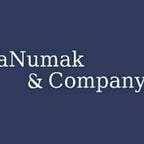Community Learning
Community Learning is a prevalent method that combines multiple learners to transform weak learners into strong learners.
Bias–Variance Tradeoff
Model selection is essential to achieve good results in Machine Learning (ML). Model selection problem scope, data distribution, outliers, amount of data, feature dimensionality, etc., depends on various parameters such as.
The essential features of the model. However, the Bias–Variance Tradeoff is most common. Often, they move in the opposite direction, such as high variance, low variance, or low bias high friction. The high–bias model pays little attention to the training data and oversimplifies the model. As a result, it always leads to increased training and test data errors. On the other hand, the high–variance model pays close attention to the training data and does not generalize the test data.
In ensemble learning, we combine several basic models, called weak learners, to solve the underlying complexity of the data. Unfortunately, these basic models alone often do not perform well due to high bias or high variance. The beauty of Community Learning as it can reduce the Bias–Variance Tradeoff to create a strong learner who achieves better performance.
Simple Community Techniques
1. Voting Classifier
2. Averaging
Home reward estimation loan amount estimation, where the target outcome is constant. This makes the final estimate by averaging the result of the different algorithms.
3. Weighted Average
This is the same as averaging and getting the final estimate by assigning different weights to models based on their severity.
Advanced Ensemble Techniques
1. Bagging
Bagging is a homogeneous ensemble technique in which the identical base learners are trained parallel on different random subsets of the training set, helping to obtain better predictions. Bootstrap generates random subsets of train data with or without replacement. If we consider replacement, the examples can be repeated in the subgroup. It provides unique samples in each subgroup without reserve. This bootstrapping offers variation/less correlation in core learners and can provide generalization.
When the training is one, the ensemble can predict the test model by summing the predictive values of all the trained base learners. This aggregation helps reduce bias and variance compared to each high–biased baseline learner.
2. Empowerment
Boosting is a homogeneous weak learner; He learns adaptively in turn. This is a sequential process where each subsequent model tries to correct the faults of the previous model. The amplification reduces bias error and produces a robust predictive model. Boosting can be viewed as a model averaging method. It can be used for classification and regression.
3. Stacking
Then, the meta–model is trained on features that are outputs of the base–level model. Unfortunately, the base level is often made up of different learning algorithms, and therefore stacking communities are often heterogeneous.
Predictions made by base models on unfolded data are used to train the meta–model.
4. Mixing
Blending is very similar to Stacking. It holds some of the training data. Train basic models on 80 parts, guess on 20 pieces, as well as a test set. Train your meta–learner as features with 20 sets of predictions, then run your meta–learner on the test set for your final submission estimates.
- There are two difficulties in collective learning:
I. How to create a new classifier community?
II. How to look for the optimal combination of base classifiers?
- Ensemble methods work best with less relevant core learners.
- The excellent generalization performance of ensemble models is dependent on diversity and accuracy. Variety, bootstrapping, different algorithms, etc., can be obtained using.
- In reality, it may be impractical to use batch learning, such as stacking on large datasets, as it takes a lot of time. Even if we get a better–stacked model, it may not be possible to place it in production.
- In the Pattern Recognition area, there is no guarantee that the particular classifier will achieve the best performance in all situations. However, the core idea of ensemble learning is widely applied in Machine Learning (ML) and pattern recognition.
- There is no lethal classifier for anything. The ensemble learning scheme depends on several factors such as problem complexity, data imbalance, amount of data, noise in the data, and data quality. Sometimes a tiny dataset single–based learner is sufficient for a simple problem.
Click for more information on this topic;
